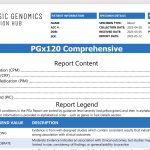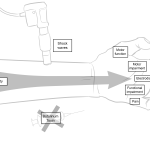Autoimmune diseases are tricky. They’re like uninvited guests that crash your immune system’s party—only instead of leaving, they start attacking your own body. While conditions like lupus or rheumatoid arthritis get most of the attention, there’s a whole world of rare autoimmune diseases flying under the radar. And honestly? Their symptoms often get brushed off as something else entirely.
Why Rare Autoimmune Diseases Slip Through the Cracks
Here’s the deal: rare autoimmune disorders are like stealthy ninjas. Their symptoms mimic common ailments—fatigue, joint pain, random rashes—so doctors (and patients) often misdiagnose them. Add in the fact that some tests aren’t perfect, and you’ve got a recipe for frustration.
Key reasons they’re overlooked:
- Non-specific symptoms: Things like “always feeling tired” or “weird stomach issues” don’t scream “autoimmune” at first glance.
- Lack of awareness: Even some physicians rarely see these conditions, so they’re not top of mind.
- Testing limitations: Blood markers can be inconsistent, and biopsies? Invasive and not always conclusive.
5 Rare Autoimmune Diseases You Should Know About
1. Sjögren’s Syndrome (Beyond Dry Eyes)
Sure, dry mouth and eyes are the poster-child symptoms. But Sjögren’s can also cause:
- Severe joint pain mistaken for arthritis
- Neurological symptoms (brain fog, numbness)
- Random fevers with no clear infection
Fun fact—or not so fun: it often coexists with other autoimmune conditions, making diagnosis even messier.
2. Dermatomyositis (More Than a Rash)
That purple-red rash on the knuckles? Classic. But here’s what gets missed:
- Muscle weakness so gradual you blame aging
- Difficulty swallowing (dysphagia) chalked up to “stress”
- Lung inflammation hiding behind “just allergies”
And get this—it’s sometimes linked to underlying cancers, which is why thorough checks matter.
3. Antiphospholipid Syndrome (APS)
Nicknamed “sticky blood syndrome,” APS causes clots where they shouldn’t be. Overlooked red flags:
- Recurrent miscarriages (often dismissed as bad luck)
- Migraines with aura mistaken for “just headaches”
- Livedo reticularis—a lacy, purplish skin pattern brushed off as “poor circulation”
Untreated, it raises stroke risks dramatically. Yet it takes an average of 5+ years to diagnose.
4. Eosinophilic Granulomatosis with Polyangiitis (EGPA)
Formerly Churg-Strauss syndrome, this one’s a master of disguise. Symptoms often start as:
- Asthma that suddenly worsens
- Persistent sinus infections (sound familiar?)
- Numbness in hands/feet—hello, peripheral neuropathy
The kicker? Blood tests might show high eosinophils, but not always. Biopsies help, but who jumps to those without suspicion?
5. IgG4-Related Disease
This one’s sneaky—it mimics cancers or infections. Telltale signs (that nobody tells you about):
- Swollen glands or organs (pancreas, kidneys) with no clear cause
- Painless lumps under the skin
- Elevated IgG4 levels… but here’s the twist: not everyone with the disease has them
Yeah. Even the “diagnostic marker” isn’t foolproof.
What to Do If You Suspect a Rare Autoimmune Disorder
Look, advocating for yourself is exhausting—especially when you feel like garbage. But here’s a game plan:
- Track symptoms religiously: Use an app or old-school journal. Note patterns, triggers, even weird little details.
- Push for referrals: Rheumatologists, immunologists, or specialists familiar with rare diseases.
- Request specific tests: ANA, anti-dsDNA, ANCA, complement levels—know the names so you can ask.
- Consider second opinions: If something feels off, it probably is. Trust that gut instinct.
The Bigger Picture: Why This Matters
Rare doesn’t mean irrelevant. For every person diagnosed with these conditions, there are likely dozens still searching for answers. The fatigue, the pain, the frustration of being told “it’s all in your head”—it’s real. And catching these diseases early? That can mean fewer complications, better treatments, and maybe even remission.
So if your body’s sending SOS signals that don’t fit the usual scripts… don’t stop digging. Sometimes the rarest conditions hide in the plainest symptoms.










